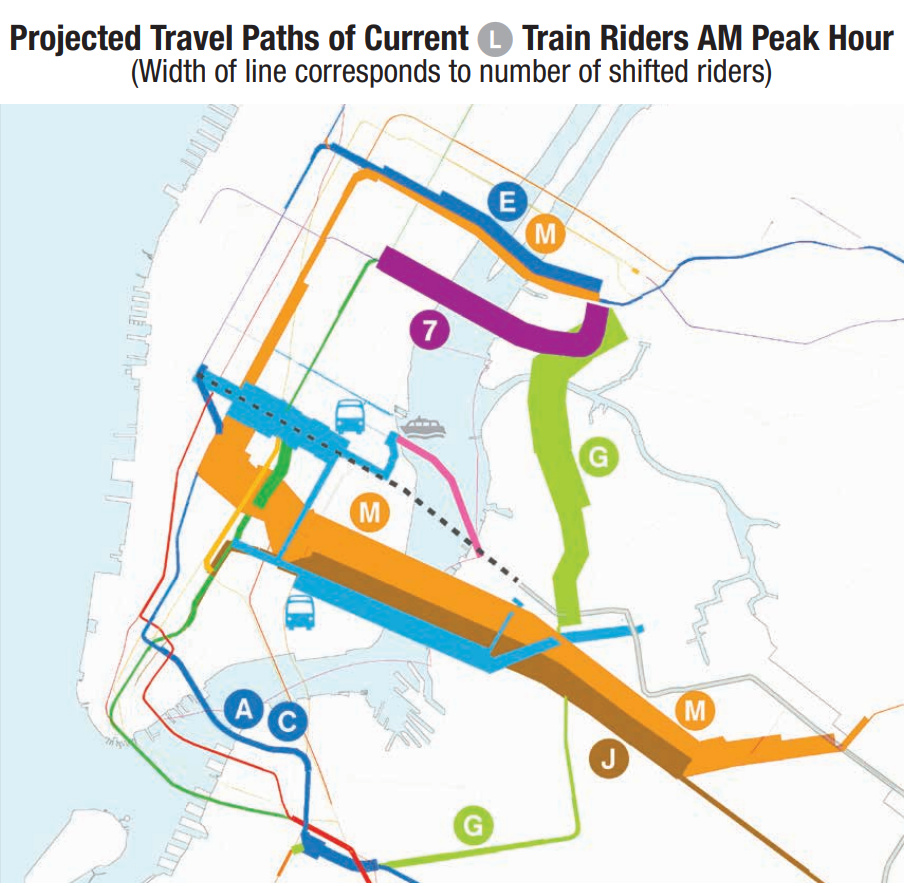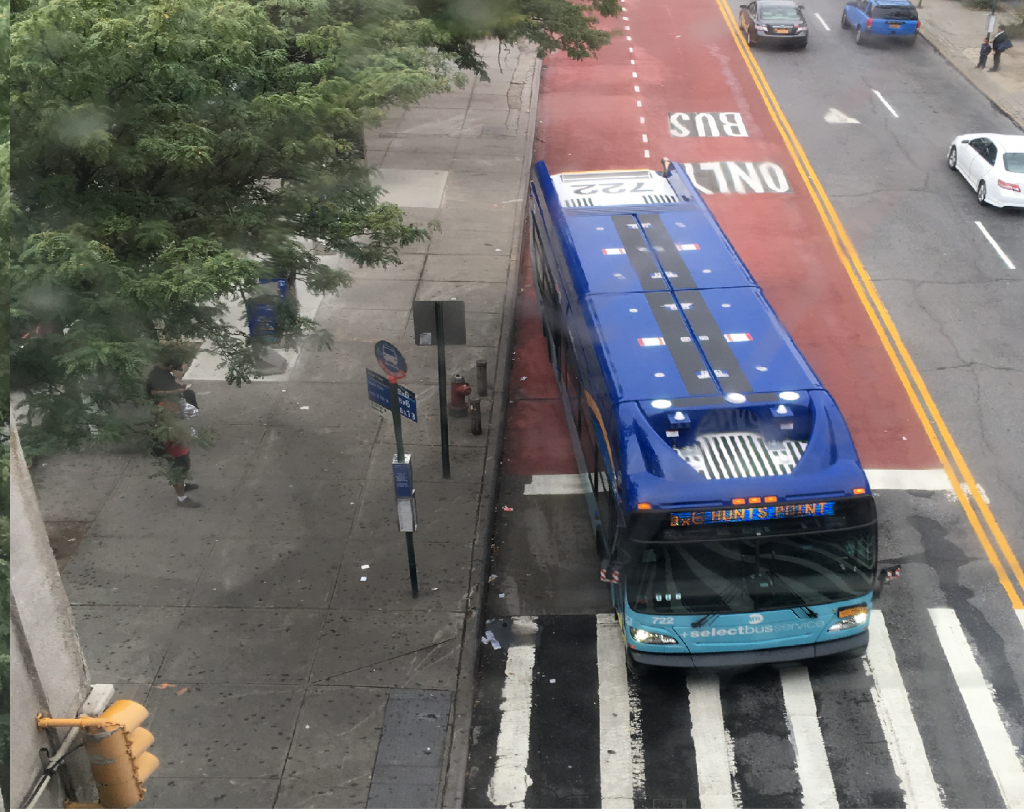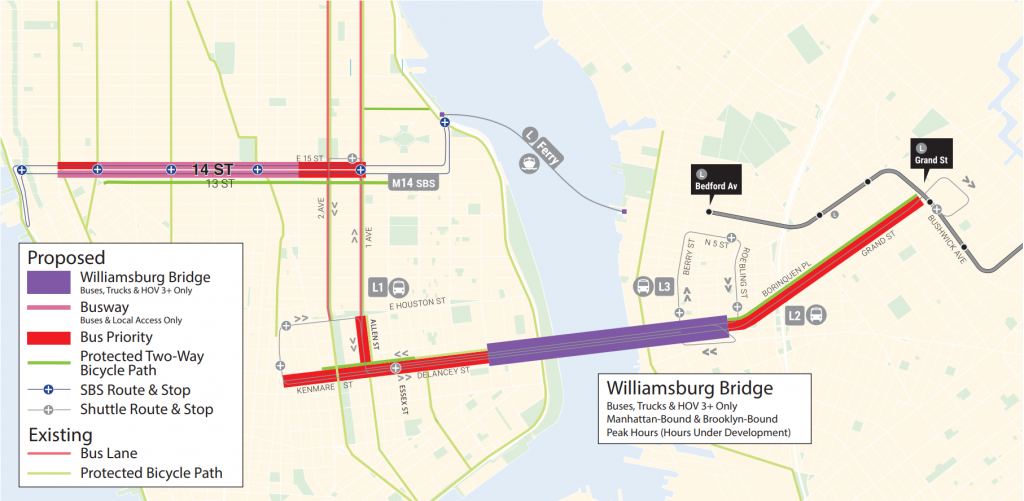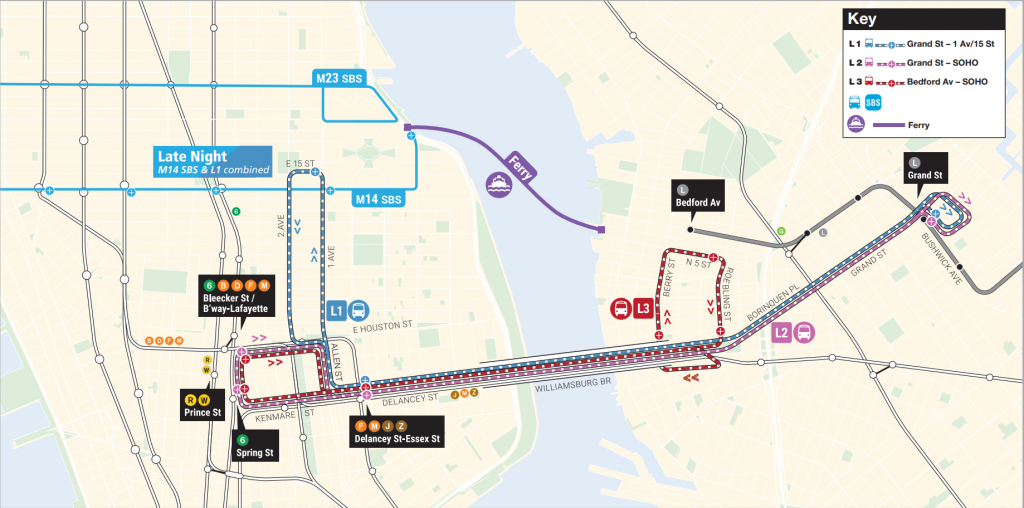In January and February, NYC Transit (NYCT) and NYC Department of Transportation (NYCDOT) held four L train open houses in Brooklyn and Manhattan to illustrate their draft alternative service options for L train commuters during the closure. L train service between Bedford Avenue and 14th Street/8th Avenue will be suspended for 15 months starting in April 2019.
The open houses featured several poster boards that displayed different dimensions of the proposed plans. The plans were developed based on collaborations between NYCT and NYCDOT, along with input from over 40 community meetings. In response to the public comments, the two agencies analyzed and mapped current travel patterns and proposed travel patterns, which included the amount of ridership distributed on each mode.
The closure will significantly impact 225,000 riders who travel daily between Brooklyn and Manhattan. NYCT needs 15% of L train riders to switch to buses, to avoid substantial overcrowding on the alternative lines. Therefore, providing reliable and efficient bus service is imperative.
The plan provides several transportation options and street treatments to address the shutdown.
- Subways: 70-80% of current riders are expected to use other subway lines. Service will increase on the G, J, M, and Z lines.
- Station Improvements: Wider platforms, additional staircases, new free station transfers, and pedestrian improvements.
- Ferry and Select Bus Service (SBS) Buses: In addition to the current East River Ferry, new ferry service will run every 7 ½ minutes, which will connect riders to the M14 and M23 SBS routes in Manhattan.
- Shuttle Buses: Three shuttle bus routes will start in Williamsburg (Grand Street and Bedford Avenue), travel across the Williamsburg Bridge, and end in Manhattan (Bleecker Street and 15th Street/1st Avenue). The route travel-time should take approximately 25 minutes.
- Bus Lanes/ Bus Priority: For the proposed buses to run frequently and quickly, Grand Street and 14th Street will have bus priority
- Bike Lanes: Two-way bike lanes will be added on 13th St, Delancey Street, and on 11 more streets in Brooklyn.
Bus lane enforcement is crucial to move large passenger volumes.
Since the Williamsburg Bridge has narrow sections, it will not have dedicated bus lanes. The bridge will only allow high occupancy vehicles with 3 or more passengers (HOV 3+) to cross during peak hours. While the peak hours have yet to be decided by NYCDOT, many attendees at the open houses wondered about the enforcement of the bus lanes during peak hours, as did we. Despite NYPD representatives not being present to answer questions, a key component in making the shuttles and SBS buses run efficiently is the enforcement of bus lanes and HOV 3+ on the bridge. Gridlock on streets is a point of pain for many riders that fear getting stuck in traffic while riding on buses – especially in Manhattan. During the shutdown, 14th street alone will need to serve up to 84,000 daily bus riders, nearly triple the current 30,000 on the M14A/D. In addition, bus operators are frustrated too. The Transport Workers Union’s bus driver survey identified blocked lanes as their biggest issue.
NYCDOT Bus Lane Camera program should be fully implemented and expanded.
While bus lane enforcement is the responsibility of the NYPD, there are limits on police enforcement due to limited resources. However, cameras are proven to be consistent, provide documentary evidence of violations, and are an efficient means of enforcement. In 2015, the New York State Legislature authorized the use of cameras along 16 bus routes to prevent vehicles from blocking SBS and non-SBS bus lanes. Currently, NYCDOT has 12 bus routes with camera technology. With over 250 bus routes citywide (15 SBS routes), clearly many more bus lanes that are used by SBS and non-SBS buses need camera enforcement. Unfortunately this legislation expires in 2020 and must be reauthorized to significantly increase the use of cameras on additional routes.
The bus lane enforcement by camera has shown to speed up buses by over 20% and reduce travel times. Next year, one new SBS and three new shuttle bus routes will be implemented for the L line shutdown. To make these route attractive alternatives for riders, they should all have bus lane cameras to ensure their dedicated lanes are being respected.
The NYCT, NYCDOT, NYPD and the New York State Legislature need to work together to renew and expand the bus lane camera program citywide to ensure speedy bus travel to help alleviate the inevitable pressures that will come with the L train shutdown. This can also be an opportunity for improving bus service beyond the shutdown by carving out more of a future for expanded SBS bus service.
Maps source: MTA


